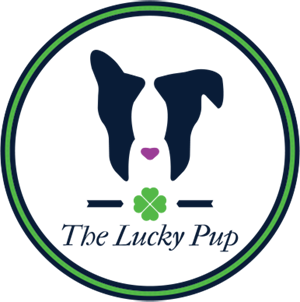Fun in the sun with your four-legged friend is one of life’s greatest pleasures. But it can be a recipe for disaster if you’re unprepared for the dangers of dehydration on a hot day.
The biggest risk a dog runs while outdoors in the summer heat is dehydration. Left untreated, dehydration can rapidly progress to heat stroke and even death. But it’s easily preventable if you make sure you are well prepared when hiking or playing outdoors in warm weather with your dog, and if you learn how to recognize the warning signs and take appropriate action.
Why is it an issue?
Unlike humans and horses, dogs don’t sweat to cool off. They cool themselves primarily by panting. This means frequent access to fresh clean water is an absolute must. The environment a dog is playing in is also an important consideration. Overheating happens much easier in hot humid weather, for example, since humidity inhibits evaporation and slows body cooling.
The minimum water requirement for a dog is half an ounce per pound of body weight. An active dog on a hot afternoon can easily consume three times that amount. So if you have an 80-pound Lab, you’ll need to provide the equivalent of between five and 15 eight-ounce glasses of water during his playtime.
What to watch for
Monitor your dog closely for any signs of dehydration.
1 The first sign is a dry mouth. If you have a normally slobbery dog, a lack of slobber is a really easy indicator of hydration status. Dogs cool through the evaporation of saliva as they pant. Once your dog’s mouth becomes dry, he is no longer able to cool himself, quickly compounding the problem and leading to heat stroke. If you are unsure, simply feel his gums. They should feel wet. If your finger sticks just a little, the gums are tacky. Tacky gums indicate mild dehydration
Solution: It’s time for a rest stop and drink of water.
2 The second sign is loss of normal skin elasticity. You can easily test this by pinching the skin on the top of the dog’s head into a little tent. If it snaps back quickly, that’s great. If it takes a few seconds for the skin to return to its normal position, your dog is dehydrated. Skin tenting and dry mucus membranes signals 5% to 7% dehydration.
Solution: Stop your dog’s activity, provide water, and have him rest for a longer period.
3 If left unchecked, dehydration will rapidly progress to weakness, lethargy, trembling legs and sunken eyes. These are indicators of severe and potentially life threatening dehydration. At this point, oral rehydration will not be enough to replace the lost fluid.
Solution: Hospitilization and intravenous fluids are necessary to prevent organ damage or death.
On the trail or road
I was recently hiking in Sedona, Arizona. Our guide told us not to leave camp without at least one gallon of water per person. You can see that if you are hiking with one or more dogs, you’ll need to carry a large quantity of water. As tempting as it may be to just allow your dog to drink out of lakes, streams and ponds, don’t. These water sources are often contaminated with a parasite called giardia that can cause nasty diarrhea.
Carrying all the water yourself could be problematic, but many dogs can be fitted with specially designed dog packs for carrying their own water bottles. These lightweight packs can be purchased through many pet supply and sporting retailers. Collapsible water bowls for dogs are also available for easy packing.
Remember to always carry water and a bowl when traveling with your dog in the car too. And be sure to bring a leash: any rest stops you make must include your dog. Temperatures in a parked car can rapidly exceed 100ºF on a warm day, and leaving a dog in this environment for even a few minutes can rapidly lead to heat stroke. Always take your dog with you on-leash whenever you leave the car.
Give your dog regular opportunities to take a drink during long car trips, especially if you don’t have air conditioning. Yes, it’ll mean more bathroom breaks, but it’ll also mean a healthier, happier dog when you reach your destination!
Water with a twist
A number of companies now offer fortified bottled water formulated especially for dogs. As with anything else, you need to do your homework to make sure you’re getting a quality product made from pure water and safe, natural ingredients.
Among the latter is Our Hero Enhanced Water for Dogs from Century Foods (ourherodogwater.com), a company that specializes in nutritional supplements. The company takes a scientific approach to canine hydration, using a triple-filtered, reverse-osmosis purification process to remove impurities and additives like chlorine and fluoride from the water. The water is then fortified with a variety of nutrients, including vitamins, minerals, electrolytes, proteins and amino acids.
It comes in three different formulas for hydrating and energizing active dogs, those with hip and joint issues (with added glucosamine and chondroitin), and older canines. It’s naturally flavored with beef to increase palatability among dogs that may not drink as much as they should. The products have been tested by independent labs to ensure they’re safe and effective.
The following post is BY MARCIA MARTIN, DVM



